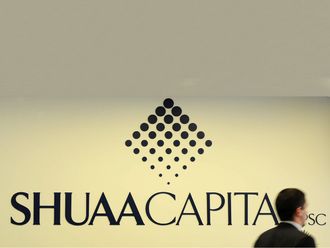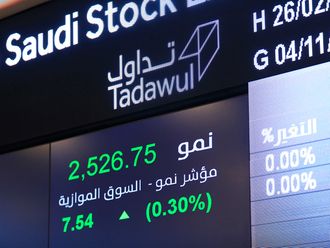India’s stock market is on course for its biggest annual gains in three years, propelled by cash-rich foreign investors’ insatiable appetite for growth opportunities in a global economy reeling under the shadow of debt-stricken countries.
Foreign institutional investors (FIIs) have moved $24.2 billion (Dh88.8 billion) into Indian shares so far this year, the most in Asia save China, and the inflow is expected to continue in the new year with central banks across much of the world pumping more liquidity to salvage their struggling economies.
India’s nearly $2 trillion economy, the third largest in Asia after China and Japan, has also been hit by a slowdown, but investors are betting on a turnaround after the slumbering government in New Delhi took a series of measures in September to revive business confidence and accelerate foreign investment.
Although economic expansion in India has slowed to around 5.5 per cent, the weakest pace in almost a decade, the growth was still well above the negligible rise in western economies. And, pundits believe there is a strong likelihood of growth picking up in the December quarter.
Some private surveys show factories have started to brim with activity and demand for automobiles, trucks, motorcycles and consumer durables is on the rise. The recovery should get a shot in the arm in the coming quarter when the Reserve Bank of India (RBI), one of the world’s most conservative central banks, is set to cut interest rates.
Bad economic news
“We have seen ahead-of-the-curve accumulation by the smarty pants at FIIs,” said equity salesman Anmol Bhushan. “There is still some bad economic news in the offing but the tide is set to change decisively for the better. When that happens make no mistake there is a horde of investors waiting in the wings to jump in.”
The top-30 Sensex, the benchmark that is widely tracked by foreign fund managers, has climbed 26 per cent this year, the most since 2009 and compared with a 20 per cent drop in 2011.
“The fact that the next year can be a good year is almost becoming a consensus call,” Prateek Agarwal at ASK Investment Managers told ET Now television channel. “However, if you look at the kind of growth number that people are expecting for the market, the sense is that they still expect somewhere around odd 12 per cent.”
This was because scepticism still remains among potential investors, who want to see more clear signs of government initiative and recovery.
Arun Singh, senior economist at Dun & Bradstreet India, expects economic growth to rebound to 6.8 per cent in 2013, as policy environment improves, investment conditions revive and inflationary pressures abate.
The rupee could also benefit in the coming year on the back of rising foreign fund inflows, he said. The currency should appreciate to 52.50 against the US dollar by the end of 2013 from around 54.80 now.
The big indicator to watch in January would be the quarterly earnings of companies, and the news on this front is expected to justify the heavy foreign fund inflows seen from September, including $4.4 billion in December alone.
Input prices
“We expect corporate profits to grow by a smart 25.9 per cent in the December quarter compared to the year-ago quarter,” the Centre for Monitoring Indian Economy, a respected think-tank, said in a report, citing softening input prices and lower foreign exchange losses.
Excluding petroleum products, the net profit of the manufacturing sector is likely to jump 66.9 per cent while the financial and non-financial services sectors should expand by 16 per cent and 16.7 per cent respectively, it said.
It forecast the information technology industry to show a more than 11 per cent growth in net profit, largely aided by a weaker rupee in the December quarter.
The writer is a journalist based in India












